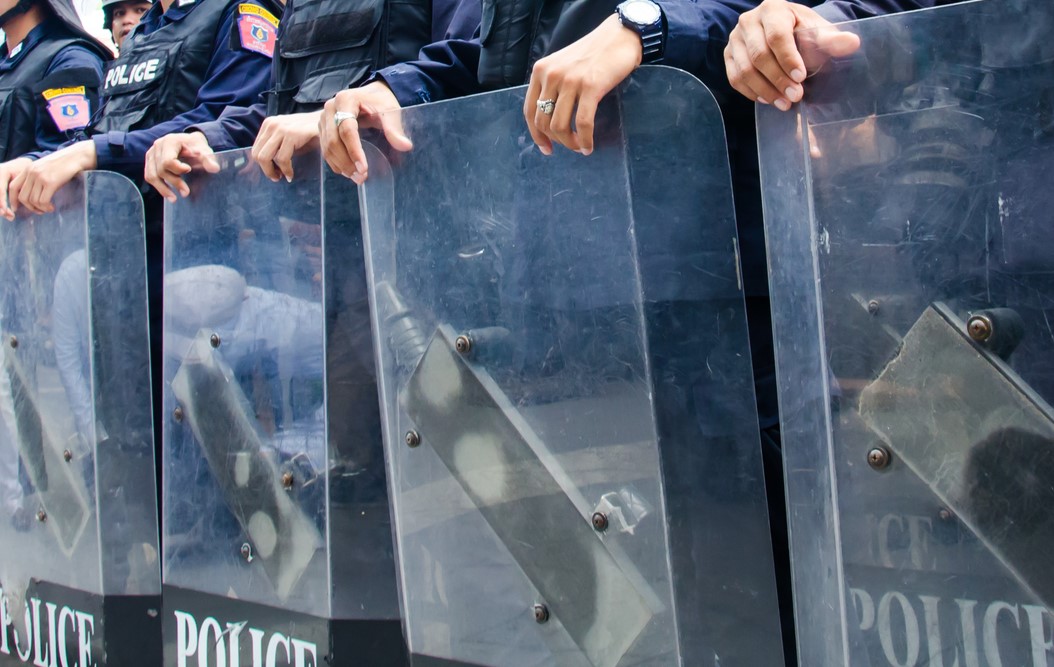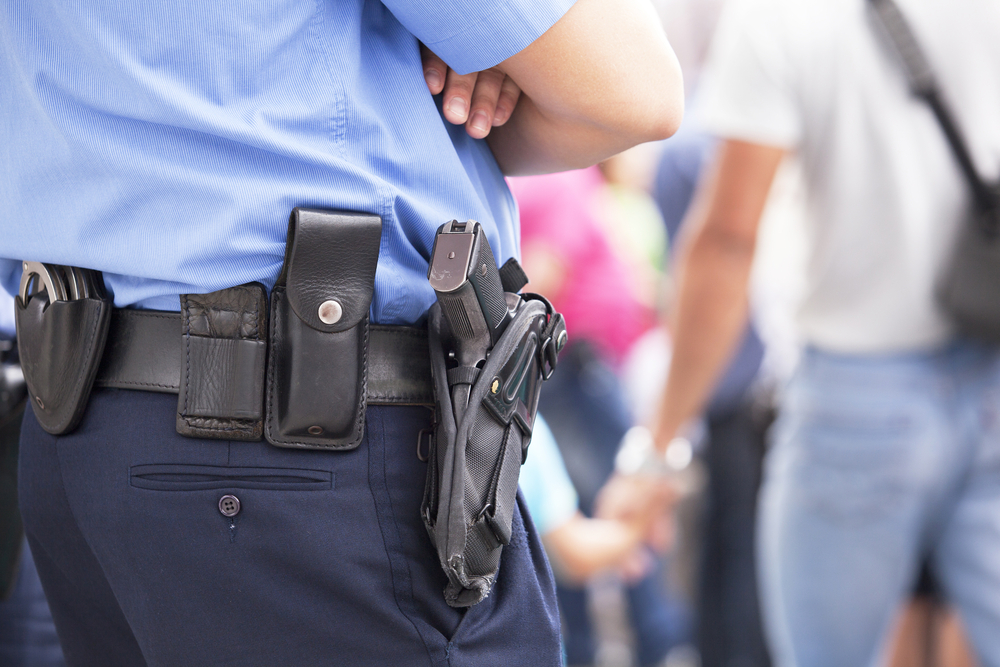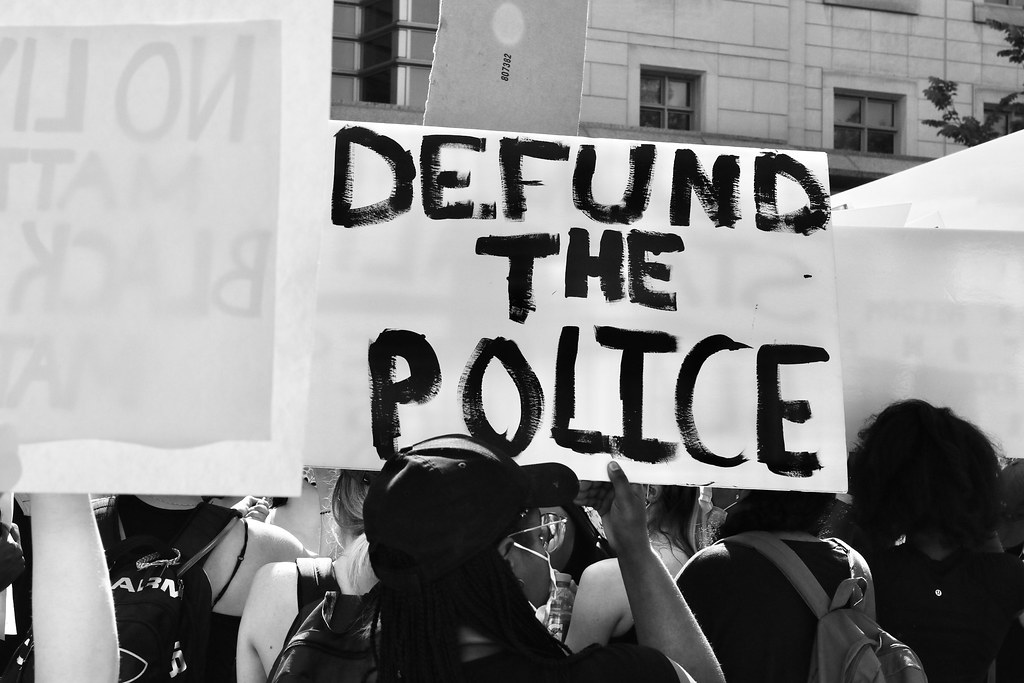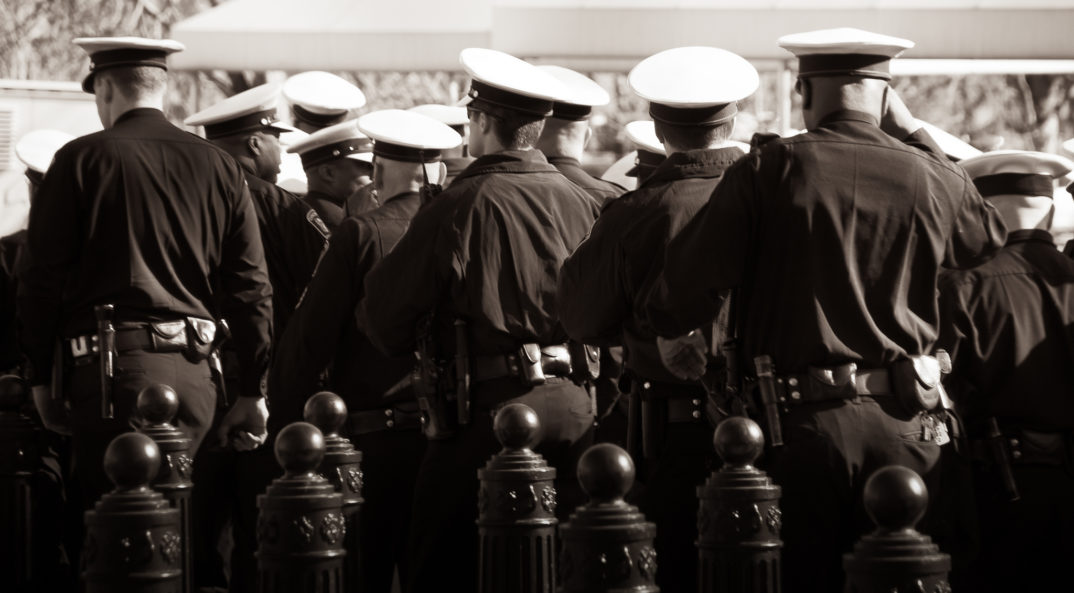During the recent protests in wake of the murder of George Floyd, many have begun calling for state and local governments to “defund the police.” However, as Matthew Yglesias at Vox aptly puts it, “A three-word slogan is not a detailed policy agenda, and not everyone using the slogan agrees on the details.” So what are these protestors calling for with this slogan? And, what are the ethical ramifications of these different proposals?
The most radical proposal represented by this slogan is in line with the traditional meaning of “defunding.” Yglesias defines “defunding” a part of the government as “reduc[ing] appropriations to zero dollars, thus eliminating it.” Under this proposal, the police would be completely abolished as an institution. While radical, this proposal is not completely without support: In Minneapolis, where Floyd was murdered, the mayor was booed and met with chants of “shame” when he refused to commit to abolishing the police department. Police have not always been around. As activist Mariame Kaba explains in The New York Times, police in the United States arose to enforce slavery and combat labor activists. We lived without them once and could do so again.
Others using this slogan don’t literally want to wholly eliminate the police. Rather, they want the scope of police action greatly minimized. Rather than have police respond to reports of mental illness or suicide attempts, we could send “community care workers,” as Kaba suggests. Rather than have police be called for every noise complaint or traffic violation, these issues could be dealt with communally. In fact, in Dallas, something like this is already happening. Heightened police contact with the public increases the odds that people will be subject to police violence. So, they say, where we don’t need police contact, why have it? On the whole, this group cries “defund the police” mostly to shift public discourse.
This group does not just want to minimize the role of police, however. They also advocate for reallocating funding to social programs. A major proponent of the abolition of the police today is professor of sociology at Brooklyn College, Alex Vitale. As he explains in an interview with Mother Jones, many crimes can be prevented by tackling social issues head-on rather than punishing people who violate the laws.
But, you may be wondering, why should we think this? In recent history, the Clinton administration passed the Violent Crime Control and Law Enforcement Act of 1994, which “put 88,000 additional police on the streets and mandated life sentences for criminals convicted of a felony after two or more prior convictions, including drug crimes,” for seemingly good reason. Violent crime increased immensely in the late 80s and early 90s before falling drastically around the time of these reforms. Increasing law enforcement stops crime. Case closed, right? Not quite. While this is a simple and satisfying story, the causes and effects of the rise and fall of violent crime during this period are still being studied so it is difficult to make any definitive claims.
Let us, then, consider an alternate account of the relationship between crime and law enforcement. Former US Secretary of Labor and UC Berkeley professor Robert Reich presents increased law enforcement as a cheap stopgap for solving real problems of social inequity that prompt crimes in the first place. As he writes, the people in power can choose to engage in social investment or social control. Social investment serves to satisfy people so that they have no reason to go out and commit crimes. It includes funding “healthcare, education, affordable housing, jobless benefits and children.”
Social control, in contrast, takes people’s general dissatisfaction as given, assuming that people will just commit crimes and that’s the way it is. Under those assumptions, social control serves to maintain order over a population of people who are intrinsically motivated to commit crimes. There are reasons for these assumptions, if not good ones: social control is much cheaper than social investment and it maintains the present social stratification, which benefits those who are already well-off and powerful.
Defunding the police, then, is a means to increasing social investment, thus removing the dissatisfaction that prompts the need for social control in the first place. But, again you might protest: “Maybe social investment can minimize a lot of kinds of crime. People may not be intrinsically motivated to commit crimes. But aren’t there still a number of legitimate purposes for having police?” To answer these questions, we must consider the origin of modern policing. In doing so, we can see what, if any, are the legitimate purposes of police. It might also become clear that the dichotomy between falling back into a state of nature and maintaining the police as they are today is a false one. Defunding the police is not a view limited only to the most resolute of anarchists.
While people associated with the government who serve to enforce the laws have been employed since ancient times, the modern idea of a professional police force has its origin in London in the year 1829. This is very recent in historical terms and was actually a controversial move at the time. At the time, many London residents were opposed to the idea of a police force as they imagined it would function as a domestic wing of the military. The British people, though happy to occupy other people’s lands in their colonies, were, unsurprisingly unwilling to live under military occupation themselves.
Early founders of the London police force (among them, Sir Robert Peel) enumerated nine principles of good policing to inspire faith in communities that were not happy with the idea of being policed. These principles were philosophically based. As a student of English philosopher Jeremy Bentham, founder of utilitarianism, Sir Peel justifies the police’s existence with a utilitarian argument. At the time, this utilitarian argument was fairly a progressive idea when crimes were previously punished with public executions.
He argued that if we are to maximize human pleasure and flourishing (according to utilitarianism) then it is better to prevent crimes rather than to merely punish them. Punishing a crime does not fix the harm the crime does and, in fact, the punishment, in harming the criminal, may actually lead to a net decrease in the amount of human pleasure in the world. By preventing crimes, there would be neither victims of crimes nor criminals who become victims of state punishment. Police help deter crimes merely by their presence. You’re less likely to steal a purse if a police officer is watching.
Now, the easy response to Bentham’s idea is the same as that levied against modern police: preventive policing does not resolve the problem of why people steal. If a person is starving, he may very well steal the purse anyway because he is hungry. But Bentham’s utilitarianism anticipates this objection: his principle of diminishing marginal utility states that the very rich do not derive very much pleasure from each extra dollar they get (they already have plenty) while starving people derive immense pleasure from each such dollar (for they have none). Thus, achieving the maximum happiness of the people “requires that the external instruments of felicity, whatsoever they may be, be shared by the whole number in a proportion so near to equality as is consistent with universal security.” In modern English, money and resources (“the external instruments of felicity”) must be distributed to increase equality up until that redistribution threatens to increase crime and disorder in a way opposed to utility (a state that would be inconsistent with “universal security”). Bentham thus supports resolving the root causes of crimes just as the proponents of defunding the police do. The parallel between Bentham’s view here and the view of people like Reich, Vitale, and Kaba who advocate social investment over social control is clear.
But suppose that we do redistribute wealth in this way. Won’t this solve crime? Why, again, do we need police? One might think that the social investment argument quickly runs into absurdity here since one might believe there exist certain crimes that social investment cannot prevent. In some cases, people are not driven by circumstance but by some natural flaw, be it greed, sociopathy, or irresponsibility. Given these facts, one might go on to argue that until we are able to eliminate these from the human condition, some crimes will persist and will need to be dealt with. And, attaching a personal cost, such as incarceration, to these crimes will disincentivize some people from committing them.
Now, abolitionists are not foolish or naive. An abolitionist can easily respond that many of these sorts of crimes go on with the police around anyway. If we are stuck with these crimes either way, it’s best to have them and not have police violence. They might argue like so: If social investment rids the world of most crime, if community care workers take care of most community problems without the risk of violence, and we still, time to time, have to deal with these irresoluble sorts of crimes, well, that’s a world we would be happy to live in. Here, I think, we may return to Peel and his seventh principle of good policing and see how his view of the police did not differ all that much from the abolitionists’ idea of community care workers:
“Police, at all times, should maintain a relationship with the public that gives reality to the historic tradition that the police are the public and the public are the police; the police being only members of the public who are paid to give full-time attention to duties which are incumbent on every citizen in the interests of community welfare and existence.”
It is conceivable that many of the injustices perpetrated by the police today come from a failure to uphold this normative principle. Police, it seems, do not feel a connection to the rest of the public. It is hard to see how they could and simultaneously perpetrate violence against nonviolent criminals and protestors. This principle also requires police to trust the public. Police should not be opposed to the public but, as Peel writes, they should see themselves as part of the public, differing only in being the “only members of the public who are paid to give full-time attention to duties which are incumbent on every citizen in the interests of community welfare and existence” (emphasis all mine). It is hard to see the police and the protestors of Minneapolis, or any American city, as being part of one community when they are so far opposed. And it is hard to see how tear gas and rubber bullets (among other “less-lethal” attacks on the public) promote community welfare. Protestors, like the ideal version of police, pursue community welfare. If our police recognized this, they would not be driven to view them as “other” and to attack them.
If you support the movement to “defund the police,” consider what you mean exactly by “the police” which you mean to defund. If you view racist violence and domination of the citizenry by those with a monopoly on state violence as essential properties of the police, then I have little to say against you. Defund those police. But if we take Peel’s view of the police as paid, full-time citizens who have a duty to community welfare, and if we remember the unfortunate flaws in the human condition that drive some members of the community to crime, I struggle to see how one could argue that we should entirely defund these police.
As Vitale argues, procedural reforms have failed and barely deserve the title of “reforms.” Seeking to abolish the police, given the present circumstances, is thus not an unreasonable position. But, as I hope to have shown above, it is also not obviously the best position. As a rallying cry it remains ambiguous. In the end, the choice is not between widespread social reforms to attack the root causes of crimes on one hand and having police at all on the other. As Bentham advocated, we can have a useful, publicly-approved police force alongside an equitable distribution of resources such that both prevent crime.





